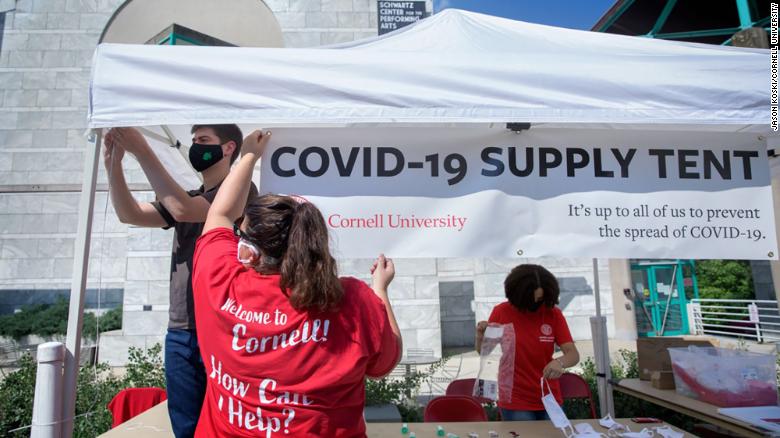But the real problem, she said, is poor planning.
"Any public health plan that requires radical changes in behavior and perfect compliance is doomed to fail," Marcus told CNN in a recent interview. "And that's exactly what's happening."
Many universities have prioritized requiring students to be on their best behavior -- encouraging them to get tested and advising them to stay away from social gatherings.
But, telling students to stay six feet away from others, wear a mask and wash their hands simply isn't enough, Marcus said.
"If school administrators could put themselves back in their 18-year-old selves for just a minute, it would become clear to them that what they're asking from a college student is unrealistic," she said. "But I think there's been a lack of empathy in what's happening on campuses."
Instead, at some schools, students are being punished for socializing. At Purdue University,
three dozen students were suspended for attending an off-campus party and violating the school's social-distancing rules.
Schools need to move away from this "abstinence-only" approach, Marcus said, and instead recognize that students need to stay socially connected and finding ways to support that.
Some campuses have given guidance on creating social pods, a strategy that Marcus said is more realistic, because it gives students a low-risk option for socializing. Others have created large social outdoor spaces, as an alternative to indoor gatherings, thus drawing "students away from higher risk settings that we really want them to avoid," she explained.
This kind of risk-aversion already happens on college campuses -- just look at underage drinking. Colleges know that students will inevitably drink before they're legally allowed to do so, and in response have provided safer alternatives for social events that don't involve alcohol, Marcus noted.
There are also actions in place allowing students to seek help without facing disciplinary action.
But this framework hasn't been as widely applied to the Covid-19 pandemic.
"The question for college campuses becomes how do we support students in having their social needs met, while also staying lower risk," Marcus explained. "And I don't think that's the approach that's been taken."

























No comments:
Post a Comment